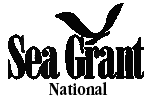

Pilot Program Methodology for 2005
|
Documents |
Downloads |
| Methodology | |
| Sampling Data Sheet | |
| *Random Number Generator |
*Note: To get different sets of numbers, you just have to press Control and ‘r’ at the same time. If it gives you an error about ‘macros’, please go to ‘Tools’ then ‘Options’ and lastly to the tab to macros, and low the security level, it is fine. This will create tables of randomly generated values, please print out a few copies of different random number and bring them to the sampling site.
Monitoring Intertidal Rocky Shoreline: Random Quadrats Method Overview A targeted evaluation area is established, divided into four sections, and then a square meter quadrat (an open square made out of PVC piping) is randomly placed in each of the four sections. It is important to understand that the evaluation area is consciously selected, allowing for repeatability, but the quadrat sampling is random, which eliminates bias and intentional targeting of a species or microhabitat. If the location of the sampling quadrat was chosen in a nonrandom manner, an unrealistic assessment of the evaluation area would result. The goal of long-term monitoring is to return to the same evaluation site at regular intervals. Long term monitoring has a higher power to detect changes in intertidal species if the same location is returned to over time (Murray et al. 2002). When data are repeatedly collected from a site over an extended time period, an average abundance can be derived, and trends may be extrapolated. Once a month sampling from spring through fall is a good target but (one or) two times a year will suffice for participation in this pilot program. Monitoring once during the winter months would be a bonus, but weather conditions do not always permit this. Monitoring teams can consist of as few as two to as many people as you have.The safety of the data collectors is always of paramount importance, and no one should ever put themselves in danger to collect data.
Figure from:
E.F. Ricketts and J. Calvin 1968 Between Pacific Tides, fourth edition revised by J.W. Hedgpeth, Stanford University Press. |
||||||||||||



